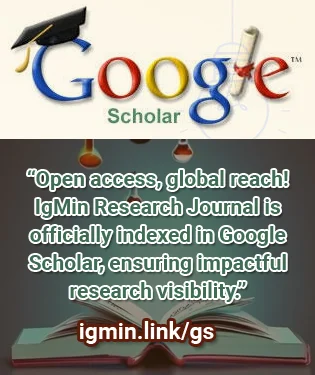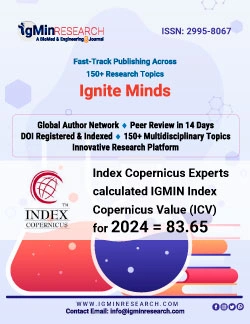Facilitating Seamless Data Access
In the dynamic landscape of scholarly communication, where information flows rapidly across digital platforms, the Open Archives Initiative Protocol for Metadata Harvesting (OAI-PMH) emerges as a critical facilitator. This section delves deep into the mechanisms and significance of OAI-PMH, highlighting its role in streamlining data access within scholarly communities.
Navigating the complexity: OAI-PMH unveiled
At first glance, the term "Open Archives Initiative Protocol for Metadata Harvesting" might seem like a mouthful of jargon, but its essence lies in its simplicity. OAI-PMH is not just a protocol; it's a bridge that connects different islands of information within the vast ocean of scholarly resources. It's designed to ensure that researchers, scholars, and enthusiasts can access valuable metadata about research resources without embarking on tedious manual quests.
Imagine a digital world where various repositories store an abundance of research papers, datasets, and scholarly articles. Navigating this digital realm without a standardized protocol would be akin to navigating an uncharted territory without a map. OAI-PMH steps in as the map that not only guides but also enables efficient navigation.
The two sides of the OAI-PMH Coin: Data providers and service providers
OAI-PMH operates within a straightforward framework that involves two main actors: data providers and service providers. The concept here is akin to a symbiotic relationship, where both sides benefit from the collaboration while maintaining their distinct roles.
Data providers are the guardians of repositories. They curate, store, and maintain valuable scholarly resources. Imagine these repositories as treasure troves of knowledge, each holding a unique collection of resources. On the other end, we have service providers – platforms, search engines, databases – which seek to access and utilize the treasure within these repositories.
Imagine a data provider as a librarian, and a service provider as a researcher seeking access to the library's resources. Instead of the researcher scouring every corner of the library, the OAI-PMH protocol enables the librarian to provide a concise summary of what's available, saving the researcher time and effort.
The dance of requests and responses: OAI-PMH in action
The heart of OAI-PMH lies in its dance of requests and responses. When a service provider seeks access to a data provider's repository, it sends a request structured according to the OAI-PMH protocol. This structured request serves as a formal introduction, explaining what the service provider seeks to retrieve.
Think of it as sending a well-organized invitation to a party. The data provider, upon receiving this invitation, prepares a thoughtful response. This response comes in the form of metadata, a standardized summary of the resource's key attributes. Just as the invitation provides essential details about the party, the metadata provides key information about the resource.
OAI-PMH: The GPS of scholarly research
The corporate world thrives on efficiency, and OAI-PMH brings the same efficiency to scholarly communication. It eliminates the need for manual data transfers, which are time-consuming and error-prone. This protocol functions as the GPS of scholarly research, guiding researchers directly to their desired destination – the relevant information they seek.
Imagine you're a traveler in a foreign city. Rather than trying to decipher a paper map and navigate through unfamiliar streets, you rely on your GPS to guide you seamlessly to your destination. Similarly, OAI-PMH guides researchers to the destination of relevant information, bypassing the potential roadblocks of complicated data retrieval processes.
OAI-PMH in the Realm of IgMin Research - A BioMed & Engineering Open Access Journal
As we launch IgMin Research - A BioMed & Engineering Open Access Journal, the incorporation of OAI-PMH holds substantial implications for our scholarly endeavors. Our journal's multidisciplinary approach spans various Biology, Medicine and Engineering fields, and OAI-PMH perfectly aligns with our commitment to open access and seamless knowledge dissemination.
Consider our journal as a crossroads where different avenues of multidisciplinary research converge. OAI-PMH serves as the signage that directs researchers to the exact resources they need. By automating the process of metadata exchange, OAI-PMH enhances the visibility and accessibility of our published work.
OAI-PMH: The Glue of modern scholarly communication
In the ever-evolving landscape of scholarly communication, OAI-PMH stands as a glue that binds diverse platforms together. Its simplicity masks its underlying power – the power to connect, communicate, and collaborate seamlessly. It embodies the essence of collaboration and interoperability, essential values in the modern scholarly world.
Just as a corporation thrives on efficient communication between its branches, OAI-PMH fosters efficient communication between data providers and service providers. It's a standardized language that transcends the complexities of various systems, ensuring that information flows effortlessly.
Final reflections
As we conclude this exploration of the Open Archives Initiative Protocol for Metadata Harvesting, we recognize its pivotal role in reshaping the landscape of scholarly communication. OAI-PMH's ability to facilitate seamless data access is not merely a technical feat; it's a testament to the power of elegant solutions in complex environments.
As IgMin Research - A BioMed & Engineering Open Access Journal sets sail, OAI-PMH becomes a beacon guiding researchers through the vast sea of information. Its Spartan simplicity belies its impact, streamlining the path toward knowledge discovery and dissemination. In an era where information is a valuable currency, OAI-PMH stands as an invaluable tool that empowers researchers and scholars to navigate the digital terrain with ease.
Base OAI-PMH URL
All OAI-PMH requests to IgMin Research should be made using the following base URL:
https://www.igminresearch.com/oai/oai-pmh
This is the root URL used by harvesters to interact with our system, combined with specific verbs and parameters to request metadata or repository information.
Supported Metadata Formats
Supported Metadata Formats
We support a range of metadata formats to ensure compatibility with various harvesters and platforms. Each format serves different purposes, from basic bibliographic metadata to richer, more descriptive metadata.
|
Metadata Format |
Description |
Access URL |
|
Dublin Core (oai_dc) |
Simple and widely used bibliographic metadata schema. |
https://www.igminresearch.com/oai/oai-pmh?verb=ListRecords&metadataPrefix=oai_dc |
|
DOAJ XML (doaj) |
Standardized metadata for open access journals registered in DOAJ. |
https://www.igminresearch.com/oai/oai-pmh?verb=ListRecords&metadataPrefix=doaj |
|
MARCXML (marcxml) |
Format used in library catalogs (optional if supported). |
https://www.igminresearch.com/oai/oai-pmh?verb=ListRecords&metadataPrefix=marcxml |
|
MODS (mods) |
Metadata Object Description Schema for detailed bibliographic records. |
https://www.igminresearch.com/oai/oai-pmh?verb=ListRecords&metadataPrefix=mods |
Note: The above are sample URLs. Please update according to your actual system setup if you do not support all these formats.
OAI-PMH Verbs and Their URLs
The OAI-PMH protocol defines a set of verbs that are used to request different types of information. Below are the verbs supported by IgMin Research, with sample URLs to illustrate their usage.
- Identify
Returns general information about the repository, including name, base URL, and supported protocols.
Example URL:
https://www.igminresearch.com/oai/oai-pmh?verb=Identify
- ListMetadataFormats
Lists all metadata formats supported by the repository, including their prefixes and schema information.
https://www.igminresearch.com/oai/oai-pmh?verb=ListMetadataFormats
- ListSets
Displays all sets (collections) within the repository. This is useful if the journal supports sub-collections, such as article types, volumes, or thematic categories.
https://www.igminresearch.com/oai/oai-pmh?verb=ListSets
(If your journal does not support sets, this will return an empty or "no sets available" response.)
- ListRecords
Returns a list of records in the specified metadata format. This is the primary way harvesters collect bulk metadata from your journal.
https://www.igminresearch.com/oai/oai-pmh?verb=ListRecords&metadataPrefix=oai_dc
Example for DOAJ XML:
https://www.igminresearch.com/oai/oai-pmh?verb=ListRecords&metadataPrefix=doaj
- GetRecord
Retrieves a single metadata record for a specific article. This is used when harvesters want to update individual records.
Example (replace ARTICLE_IDENTIFIER with an actual article ID):
https://www.igminresearch.com/oai?verb=GetRecord&metadataPrefix=oai_dc&identifier=ARTICLE_IDENTIFIER
Benefits of OAI-PMH Integration for IgMin Research
- Increased Visibility
By exposing article metadata through OAI-PMH, IgMin Research ensures that our content is easily discoverable by:
- Open Access aggregators (e.g., DOAJ, OpenAIRE)
- Academic search engines (e.g., Google Scholar)
- National and institutional repositories
- Library discovery systems
- Compliance with Open Science Principles
OAI-PMH supports FAIR principles (Findable, Accessible, Interoperable, Reusable), which are vital for ensuring that research outputs can be seamlessly integrated into global knowledge systems.
- Automatic Updates
Metadata harvested via OAI-PMH can be automatically updated by aggregators, reducing manual work and ensuring the latest publication data is always available.
Example Workflow for Metadata Harvesting
A typical harvester (such as DOAJ or OpenAIRE) would follow this process to collect metadata from IgMin Research:
- Use the Identify verb to gather repository information.
- Use the ListMetadataFormats verb to check available formats.
- Use the ListRecords verb to gather metadata for all published articles.
- Use the GetRecord verb to periodically check for updates to specific articles.
This process ensures the metadata in external databases stays up to date with the latest content from IgMin Research.
Technical Support
For questions, technical assistance, or to report any issues with our OAI-PMH service, please contact:
Technical Support Team
IgMin Research - A BioMed & Engineering Open Access Journal
Email: [email protected]
Website: https://www.igminresearch.com
About IgMin Research
IgMin Research - A BioMed & Engineering Open Access Journal is a leading platform publishing high-quality research articles in the fields of biomedical sciences, life sciences, engineering, and technology. Our commitment to open access publishing ensures that scientific knowledge is freely accessible to researchers, practitioners, and the public worldwide.
Explore our latest publications:
https://www.igminresearch.com
Why publish with us?
Global Visibility – Indexed in major databases
Fast Peer Review – Decision within 14–21 days
Open Access – Maximize readership and citation
Multidisciplinary Scope – Biology, Medicine and Engineering
Editorial Board Excellence – Global experts involved
University Library Indexing – Via OCLC
Permanent Archiving – CrossRef DOI
APC – Affordable APCs with discounts
Citation – High Citation Potential
Which articles are now trending?
Research Articles
- Potentially Toxic Metals in Cucumber Cucumis sativus Collected from Peninsular Malaysia: A Human Health Risk Assessment
- Investigation and Energy Modeling of New Generation Environmentally Friendly Energy Source Thorium Fueled Molten Salt Reactors
- Use of Augmented Reality as a Radiation-free Alternative in Pain Management Spinal Surgeries
- Zinc Supplementation in Anorexic Children with Vomiting Syndrome: Evaluation from a Randomized Controlled Trial in Vietnam
- Federated Learning- Hope and Scope
- Effect of Additive Manufacturing Parameters on 316L Mechanical and Corrosion Behavior
Advertisement







